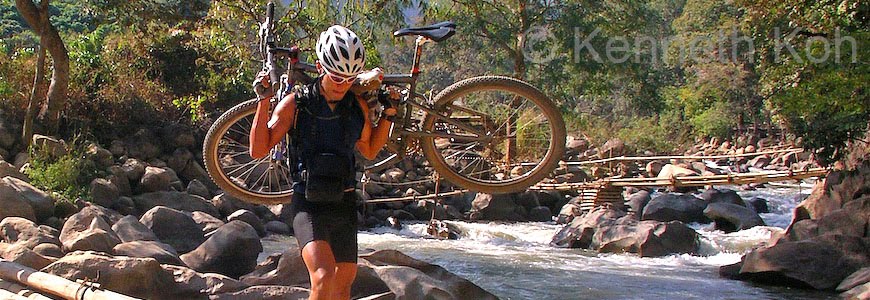 Machapuchare at Dawn from Poon Hill. Nikon D300, 18-200mm at 36mm, 1/250 f/20, ISO 200, fill flash fired to get some color in the prayer flags.
Machapuchare at Dawn from Poon Hill. Nikon D300, 18-200mm at 36mm, 1/250 f/20, ISO 200, fill flash fired to get some color in the prayer flags.For travel and adventure photography, the Nikon 18-200mm f/3.5-5.6 G ED-IF AF-S VR DX
Simplified Sharpness Table
Focal Length .. Sharpness .. Best Apertures
18-50mm ........ Very Good .. Any Aperture
55-115mm ...... Very Good .. Avoid Extremes
130-150mm ..... Soft ............ f/8 to f/16 only
170-200mm ..... Good .......... f/8 to f/16 only
 Click image to zoom in 1:1. Nikon D300, 18-200mm at 90mm, 1/320 f/9, ISO 200
Click image to zoom in 1:1. Nikon D300, 18-200mm at 90mm, 1/320 f/9, ISO 200The 18-200mm has a wide zoom range and it is not equally sharp across that range. I’ve made up two rules of thumb to help me maximize sharpness in the field:
Rule #1
From wide-angle to short telephoto (18-115mm), I can fire away, but I try to avoid shooting wide open if I don’t need to.
Rule #2
For medium to long telephoto (130-200mm), it gets a little more complicated. I need to be conscious of my aperture, using f/8 to f/16 to maximize sharpness. I also need to be aware that stopping down to these apertures is going to drop my shutter speed. VR or not, I’ve got to maintain a high enough shutter speed to prevent camera shake/subject motion blur, and most likely, I’ll have to push up the ISO as well.
Around Annapurna 2008: Day 17
April 28: Ghorepani – Poon Hill – Birethanti
 Snake Charmer in Pokhara. Nikon D300, 18-200mm at 150mm, 1/25 f/5.6, ISO 200
Snake Charmer in Pokhara. Nikon D300, 18-200mm at 150mm, 1/25 f/5.6, ISO 200We woke up before dawn for the 45-minute hike up Poon Hill to catch sunrise. At the top, it gets a bit crowded as others on shorter treks join us. It is one of the highlights of our trek. After we get down from Poon Hill, we hike out to Birethanti. The monsoon rains catch up with us by mid afternoon, and we decided to spend the night in Birethanti, ending our trek there and catching a taxi to Pokhara the next morning.
Moonlight Guesthouse: Rooms *** Food ***





































